Best Orlando Treatment for a
AC JOINT INJURY
Are you not able to continue your cherished hobbies or everyday activities because of sharp pain in your shoulder when you move? With our expert doctors’ help, you can get to the root of your symptoms and get back to doing what you love quicker and easier.
Read More Ask A QuestionBest Orlando Treatment for a
AC JOINT INJURY
Are you not able to continue your cherished hobbies or everyday activities because of sharp pain in your shoulder when you move? With our expert doctors’ help, you can get to the root of your symptoms and get back to doing what you love quicker and easier.
Read More Ask A QuestionHere Is Everything You Need To Know About A/C Joint Injury, What Causes It, and The Best Way to Treat It
Click the tabs below to get direct answers to your questions
What is an AC joint injury?
Acromioclavicular (AC) joint injury is a term used to describe an injury to the top of the shoulder, where the front of the shoulder blade (acromion) attaches to the collarbone (clavicle). It can be caused by a traumatic event, such as a fall directly on the outside of the shoulder, or by repetitive overuse. AC joint injuries are most common in individuals younger than 35 years of age, with males sustaining 5 times more traumatic AC joint injuries than females. Because younger athletes are most likely to participate in high-risk and collision activities, such as football, biking, snow sports, hockey, and rugby traumatic AC joint injuries occur most often in this population. AC joint injuries can be identified and effectively treated by a physical therapist, often avoiding the need for surgery.
What are common causes of an AC joint injury?
There are 4 ligaments holding the 2 bones of the AC joint (the acromion and the clavicle) together. When an AC joint injury occurs, these ligaments are stressed, resulting in some degree of joint separation. There are 2 types of injuries that can occur at the AC joint
A traumatic AC joint injury occurs when there is a disruption of the joint due to damaged ligaments holding the 2 bones of the joint together. This injury is called a shoulder separation (in contrast to a shoulder dislocation, it involves the ball-and-socket joint of the shoulder).
Traumatic AC joint injuries are most common in individuals who sustain a fall and land on the outside of the shoulder or onto a hand (eg, a football player who is tackled, a bicyclist who crashes, or a manual laborer who falls off a ladder.
Traumatic AC joint injuries are graded from mild to severe based on the amount of separation of the joint. Treatment of mild cases likely will be provided by a physical therapist; more severe cases may require surgery followed by physical therapy.
An overuse AC joint injury occurs over time as repeated, excessive stress is placed on the joint. Cartilage at the ends of the acromion and clavicle bones protects the joint from daily wear and tear. Over time, the demand placed on this cartilage may be more than it is capable of enduring, resulting in an overuse injury. Significant wearing of the cartilage is known as arthritis. Overuse AC joint injury is most common in individuals who perform tasks, such as heavy weight lifting (bench and military presses), or jobs that require physical labor with the arms stretched over the head.
Where does it hurt?
In most cases of a shoulder AC Joint injury, the patient feels shoulder pain directly on the top of their shoulder over the AC joint.
What are common symptoms of an AC joint injury?
With an AC joint injury, you may experience:
- General shoulder pain and swelling
- Swelling and tenderness over the AC joint
- Loss of shoulder strength
- A visible bump above the shoulder
- Pain when lying on the involved side
- Loss of shoulder motion
- A popping sound or catching sensation with movement of the shoulder
- Discomfort with daily activities that stress the AC joint, like lifting objects overhead, reaching across your body, or carrying heavy objects at your side
To Get A "Insider's Look" At Our Treatment Approach And How We Get Results...
Click Below To Watch Our Exclusive Webinar! It's Simple, Short, and It's Free!

- Learn The Essential First Step... So You Can Get Pain Free Again
- See Why Treatment Needs To Be Individualized, Not Standardized...So You Get Faster Results!
- Learn How You Can Save Money...So You Don't Have To Waste $1000's On Unnecessary Treatments
To Get A "Insider's Look" At Our Treatment Approach And How We Get Results...
Click Below To Watch Our Exclusive Webinar! It's Simple, Short, And It's Free!

- Learn The Essential First Step...So You Can Get Pain Free Again
- See Why Treatment Needs To Be Individualized, Not Standardized...So You Get Faster Results
- Learn How You Can Save Money...So You Don't Have To Waste $1000's On Unnecessary Treatments
Can an AC joint injury be treated?
Yes, AC Joint pain can be treated and with great results. Even better, many times it can be treated conservatively without needing injections, pain medications, or surgeries. The key to treatment is to solve the root cause of your pain so you can get the best results and a long-term outcome.
Some root causes of AC Joint pain can be:
- Forward head posture
- Direct trauma to the shoulder
- Rounded shoulders
- Weak mid back and shoulder blade muscles
- Overload to the joint and upper trap muscles
- Falling on the shoulder
- Tight neck and mid back
- Shoulder tightness
If you have failed multiple treatment approaches already, your clinician missed the real root cause of your pain and was just chasing the symptoms. The pain or symptom is the effect, not the cause. What do I mean by this? Say your fire alarm goes off in your house. Its purpose is to protect you and make you aware that something is wrong, i.e., that there is a fire in your house. The “alarm” is like your pain (your body’s way of telling you something is wrong) and the “fire” is the root cause. When the fire alarm goes off, you don’t run upstairs and just turn it off, right? You run through the house with the fire extinguisher, trying to find the room where the fire is at. You try to find out what caused the alarm to go off so you can put it out. Once the fire is out, then the fire alarm can go off. Solve the “root” cause of your pain, and then the pain (“the effect”) eventually goes away.
The first step in treatment is to identify the root cause of your pain. A specific and individualized treatment approach for your type of pain can lead to a successful outcome for you and resolve your symptoms for the long term. This is why you can’t rely on a standard cookie cutter approach; you need a customized and individualized treatment approach specifically for your type of AC Joint pain.
What happens if it goes untreated?
Minor case – If it is a minor AC Joint sprain, research shows that many acute cases of pain may spontaneously go away in 4-8 weeks. But who wants to wait 8 weeks to get pain free? Let’s try to solve the root cause of your pain in 2-3 weeks and address all of the risk factors present (so it never returns!) and get you back to your favorite activities faster! We still recommend that you get it checked out by one of our board-certified physical therapists to ensure that it is just a minor case, to solve all risk factors, and to get the optimal outcome in the fewest visits needed. You may still have a small bump over the AC joint and this is OK. Most minor cases resolve on their own in time or get better with some stretching and strengthening. But, the sooner you take action, the sooner you are pain-free. (And research supports this!)
Severe case – If it’s more of a severe AC Joint pain, your pain will probably start to worsen and increase because the root cause of the pain is not being treated. You will probably have to decide if you want to pursue surgery or more conservative care. Many people turn to pain medication at this time but this only blocks the pain for short term. You may not feel the pain when taking pain medications, but the underlying problem is still there. Many people say after the pain medication is stopped, then usually the pain returns and sometimes it returns even worse. This is when your shoulder pain gets worse and you aren’t able to lift much anymore. The hypermobility of the AC Joint is the problem and you may have a “piano key deformity” present at the AC joint. If it’s bad enough, you may need surgery. Some people choose to pursue conservative treatment, but it takes time. Once the root cause is addressed, then we can start decreasing your pain, regardless of how chronic and severe the pain is. This is the crucial first step. It just may take more time to recover from a chronic case. Usually with chronic and severe cases, the longer you have your pain and injury, the longer it takes to resolve.
What outcome can you expect from treatment?
As we’ve discussed, the first step is to solve the root cause of your AC Joint pain. This is the most essential step to plan a treatment specialized for you and your unique type of pain. Your root cause will guide your treatment and dictate what is the best way to treat your pain. This, along with identifying risk factors that may be predisposing you to have your pain and injury, will allow you to start getting pain free again. The next step is to start decreasing pain, modifying activities, and start addressing all of the impairments causing your pain which we discovered during your evaluation. With each session, pain should start to decrease and you should start to regain range of motion with less pain and symptoms. Any radicular and referred pain should resolve fast as well. At this point, we begin light and basic strengthening only if it does not increase pain. Treatment will consist of a lot of manual therapy and light exercises.
The next step is to achieve full range of motion, (which should correlate to being pain-free) and now we can start progressive strengthening. Strengthening the muscles is crucial and research shows that this gives you the best long-term outcome! As you start to get stronger and maintain your mobility, your pain will continue to decrease if it is not already gone. Your increased strength will allow you to perform more activities and prevent flare-ups. This usually does take up to 4 weeks. As you clear our goals, then we can start easing you back into sport, golf, running, and whatever your favorite activities are. This is when we start winding down treatments and getting you back into functional strengthening, sport specific training, return to run programs, golfing, and whatever your goals are. In the end, we reassess everything, making sure we achieved all of our goals, your goals, that all risk factors are gone, and finalize your long-term home exercise program. There are many factors which can influence your outcome, but 85-90% of our patients respond well to our treatment approach and achieve a successful outcome when completing their plan of care.
To Get A "Insider's Look" At Our Treatment Approach And How We Get Results...
Click Below To Watch Our Exclusive Webinar! It's Simple, Short, and It's Free!

- Learn The Essential First Step... So You Can Get Pain Free Again
- See Why Treatment Needs To Be Individualized, Not Standardized...So You Get Faster Results!
- Learn How You Can Save Money...So You Don't Have To Waste $1000's On Unnecessary Treatments
To Get A "Insider's Look" At Our Treatment Approach And How We Get Results...
Click Below To Watch Our Exclusive Webinar! It's Simple, Short, And It's Free!

- Learn The Essential First Step...So You Can Get Pain Free Again
- See Why Treatment Needs To Be Individualized, Not Standardized...So You Get Faster Results
- Learn How You Can Save Money...So You Don't Have To Waste $1000's On Unnecessary Treatments
How is it diagnosed?
Diagnosis of an AC joint injury starts with a thorough review of the patient’s medical history, including specific questions regarding when the pain began, and what aggravates and relieves the pain.
Your physical therapist will examine your shoulder and assess different measures, such as sensation, motion, strength, flexibility, tenderness, and swelling. Your physical therapist will perform several tests specific to the shoulder joint to examine the structures located there. The therapist may also ask you to briefly demonstrate the activities or positions that cause your pain. Other nearby areas, such as your neck and upper back will also be examined to determine whether they, too, might be contributing to your shoulder condition.
While an AC joint injury can usually be identified through a shoulder examination, diagnostic imaging, such as ultrasound, x-ray, or MRI is often used to confirm the diagnosis and determine the severity of the injury.
Do you need an X-ray and MRI imaging for AC Joint pain?
For most common orthopedic cases, imaging is not needed and the diagnosis can be made with a simple physical therapy evaluation. No need to waste thousands of dollars on unwarranted diagnostic imaging. We also have clinical tests which we can perform to help rule in and rule out pathologies that correlate to MRI findings (which is WAY cheaper than an MRI!). An expensive MRI may just tell us what we already know. Also, often times the positive findings found on x-rays, MRIs, and EMGs may not actually be the root cause of your pain. What does that mean? Many positive findings on an MRI are also found in asymptomatic (pain-free) individuals, so diagnostic imaging may not be able to tell us what is actually causing your pain. For
How can a Physical Therapist treat it?
Once other conditions have been ruled out and an injury to the AC joint is diagnosed, your physical therapist will work with you to develop an individualized plan tailored to your specific shoulder condition and your goals. There are many physical therapy treatments that have been shown to be effective in treating this condition. Your physical therapist may focus on:
Strength Training. After an injury, the surrounding muscles demonstrate weakness. All of the muscles near the shoulder and elbow as well as those of the upper back, work together to allow for normal, coordinated upper-body motion. Therefore, balancing the strength of all the upper-body muscles is crucial to making sure the shoulder joint is protected and moves efficiently. Your physical therapist will design an individualized exercise program to strengthen the muscles at and around the
Manual Therapy. Physical therapists are trained in manual (hands-on) therapy. If needed, your physical therapist will gently move and mobilize your shoulder joint and surrounding muscles as needed to improve their motion, flexibility, and strength. These techniques can target areas that are difficult to treat on your own.
Pain Management. Your physical therapist may recommend therapeutic modalities, such as ice and heat to aid in pain management.
Functional Training. The AC joint is a relatively small joint that is often asked to bear a significant load. In order to successfully meet this demand, there is a need for functional training, teaching your entire shoulder to work best in different positions. For example, when lifting overhead, poor coordination places undue stress on the shoulder. Physical therapists are experts in assessing movement quality. Your physical therapist will be able to point out and correct your movements to help you maintain a pain-free shoulder.
Education. The first step to addressing your shoulder pain is rest. The amount of rest required varies, and largely depends on the degree of your injury. Your physical therapist will create a personalized plan for your rehabilitation, so you can safely return to
How long does it take for recovery?
Recovery time for AC Joint pain depends on multiple factors:
- The severity and chronicity of your pain
- Whether your pain is an easy or complex case
- If the root cause of your pain was solved or if it was missed (this is the key to getting a great recovery!)
- How long you have been in pain for and when you need to be pain-free by
- Other therapies and treatments you have tried
- Which medical professional(s) you saw prior to seeing us
- How active you are in trying to resolve your pain
- Which treatment approach is chosen and if it is proven to work for your pain
There are many factors that influence your recovery time and every patient’s recovery time is different. If you do nothing and don’t pursue treatment, it could gradually get better on its own, you could continue to have the same pain persist, or it could continue to get worse. As stated earlier, most acute cases may or may not resolve in 4-8 weeks. If you get expert treatment that solves the root cause of your pain, some cases resolve in 1-3 weeks! Then you can get back to sports, exercise, and your favorite activities without flare-ups and recurrences. Some of our patients are pain-free in 1-3 visits and back to 100% in 2 weeks!
If it is a complex case with chronic pain, your recovery may take longer, but you can still get a good outcome. Some chronic cases can resolve as fast as 2 months but can take as long as 4-6 months. It varies with every patient because every case of AC Joint pain is different. Every patient’s recovery varies depending on the factors listed above. After a thorough evaluation here at Pursuit Physical Therapy, you will know your exact timeline of recovery, your prognosis, and when you should reach your goals.
How much does it cost?
The average cost of care for a case of spine pain in the US is $1800-$6600. This high price is due to many factors: the over-inflated cost of healthcare, the over expensive cost of unwarranted imaging (x-rays, CT scans, and MRIs) that is not needed, over-utilization of care (which increases the number of visits needed to be treated, requiring multiple visits to different doctors and physical therapists for the same diagnosis), and getting billed for unnecessary and unproven treatments that you don’t even need. All of these factors increase cost and this is why healthcare is so expensive. We strive to end that unnecessary, expensive cycle. In fact, we are currently publishing our first-year data with the University of Central Florida that shows the cost-effectiveness of our treatment approach.
This year, the average cost of our care was shown to be $814-$1141. Some of our patients get even as low as $315 for the full treatment! So if you have a deductible of $3,000-$10,000 and you have to pay out of pocket for your treatment, we can save you lots of money.
Remember, every case of pain is different and not all AC Joint pain is the same. It is hard to predict exactly how much your treatment is going to cost you. But after a thorough evaluation, we can tell you exactly what is causing your pain, how long it is going to take, what the best way to treat it will be, and exactly how much it is going to cost. We have no hidden fees, no co-pays, and no miscellaneous bills that you will be surprised by 3 months after you receive treatment. Your pain, your diagnosis, your goals, and what is best for you dictate your treatment and how much it will cost, and while it varies for every patient, treatment at Pursuit is still much more affordable than standard healthcare.
How long are sessions?
Our evaluations are always one-on-one with one of our board-certified specialists and 60-90 minutes long. We like to perform thorough evaluations so we can solve the root cause of your pain, identify all risk factors, and make sure that we do it right. After the evaluation, you will know your diagnosis, the root cause of why you have your pain and symptoms, your prognosis, an expected timeline of when you should see results, what the best way to treat your pain is, how much it will cost, and your expected recovery outcome. We want you to fully understand everything about your pain and injury. What is best for you and will get you the best outcome is what will dictate your care and treatment. There will be plenty of time for you to ask questions so we can make sure you fully understand why you have your pain and what the best way to treat it will be. After the evaluation is completed, all treatment sessions are 60 minutes going forward and still one-on-one with your physical therapist. You and your physical therapist will design a customized treatment plan that works for you and that will achieve your goals.
How can it be prevented?
It may be difficult to prevent many traumatic AC joint injuries, such as bicycle crashes, falls to the ground, etc. Accidents do happen. Fortunately, however, much can be done to prevent the cascade of events that lead to overuse injuries to the AC joint, including:
- Learning about the risks of pushing through
pain . - Monitoring work and weight-lifting activities, particularly repetitive overhead lifting.
- Avoiding repetitive overhead lifting when possible.
- Maintaining adequate general shoulder strength and motion to safely perform desired tasks.
- Consulting with a physical therapist if symptoms are persistent or worsening despite rest.
What are the next steps?
Getting started is simple. The first step, and the key to getting you pain free again, is to solve the root cause or your case of pain. Remember, not all pain is the same. Your pain is different than someone else’s pain, even though it may be in the same area. If you’re ready to get pain free, give us a call at (407) 494-8835 or fill out the form below. The next step is to schedule your evaluation so we can solve the root cause for you. We’re happy to answer any questions you may have and we would love the opportunity to help you.
Solve the root cause of your pain
How Our Treatment is Different
We believe that working with a specific specialist for your care is the best way to solve the root cause of your pain. Work one-on-one with a Doctor of Physical Therapy every time your visit our office.
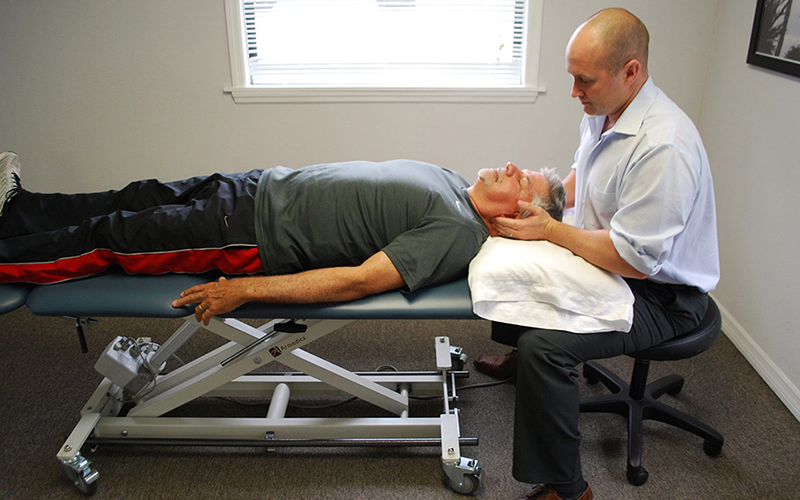
Exclusive one-on-one patient care
While most clinics will give you a limited amount of time with your Doctor, we believe that true results come from consistent one-on-one therapy.
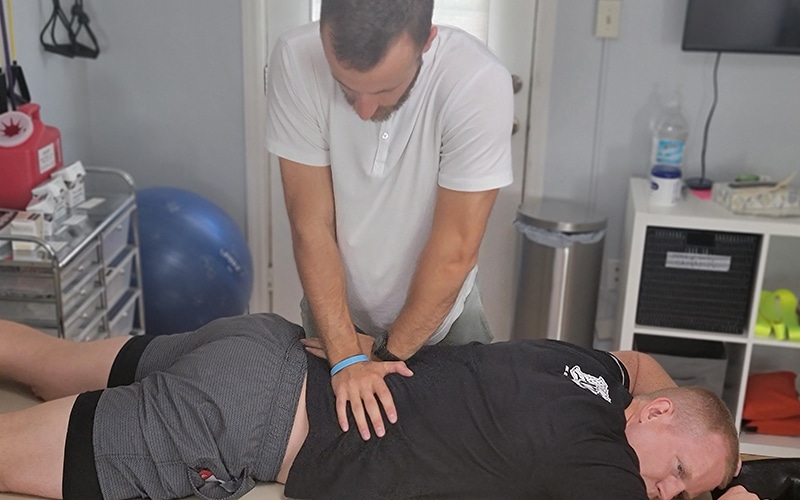
Work with your specialist every visit
Stop being handed off to trainees or non-Doctors for your Physical Therapy. At Pursuit, you'll work exclusively with your Doctor of Physical Therapy that specializes in your specific needs.
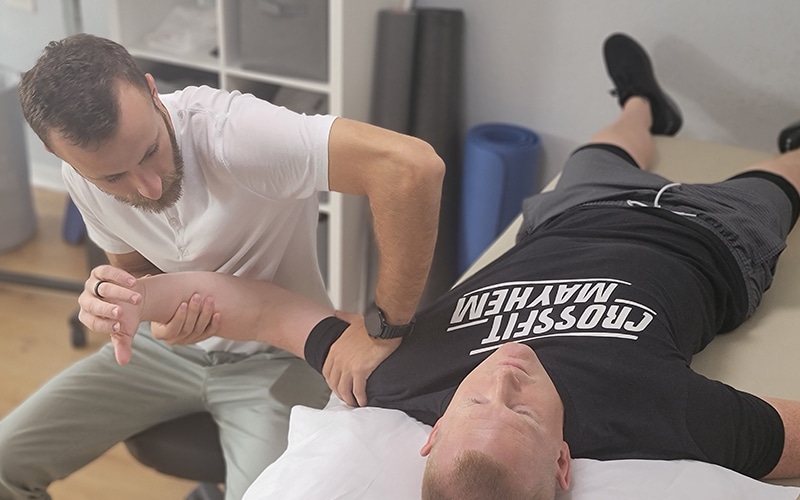
24/7 messaging access to your specialist
Ever have an issue or questions? We're here to help. Get 24/7 access to your specialist while you're under our care. Physical Therapy doesn't just happen when you're in our clinic, so we're here for you when you need us.
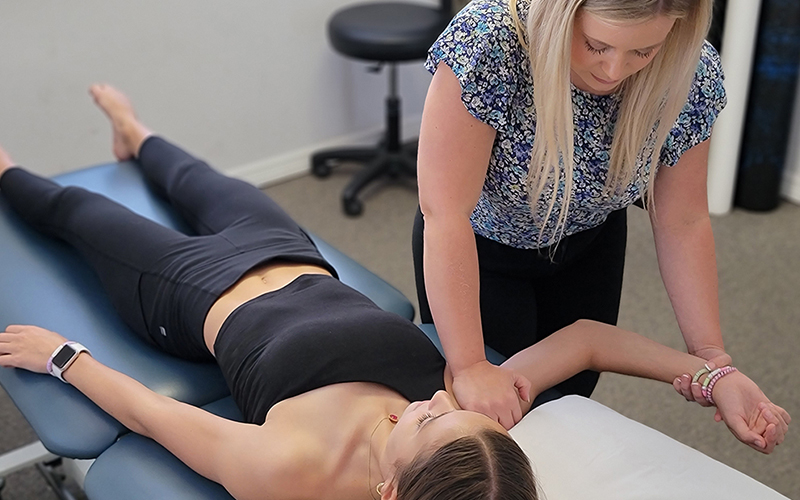
No waiting periods
Get off that waiting list and get the treatment you need. We're always ready to accept new patients, so you can get better faster and get back to a pain-free life that you deserve.
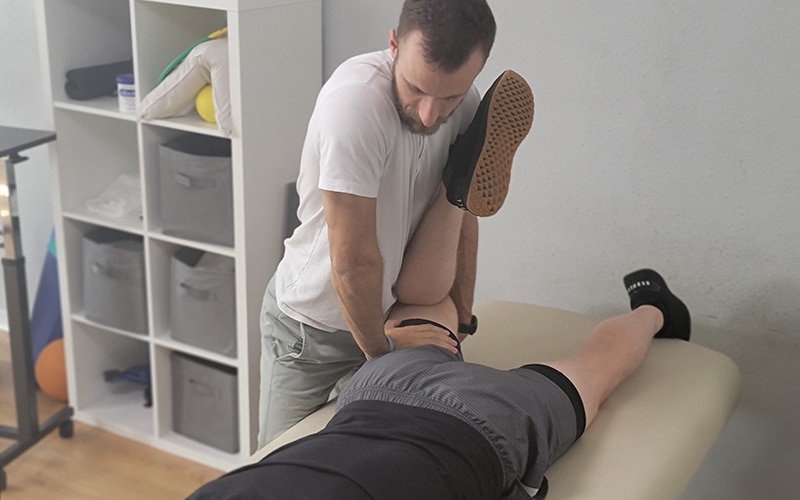
Not limited by insurance
Don't let the insurance companies tell you how much treatment you need. Avoid the limitations of short sessions that insurance provides and work with our Doctors when you need it and for as long as you need it.
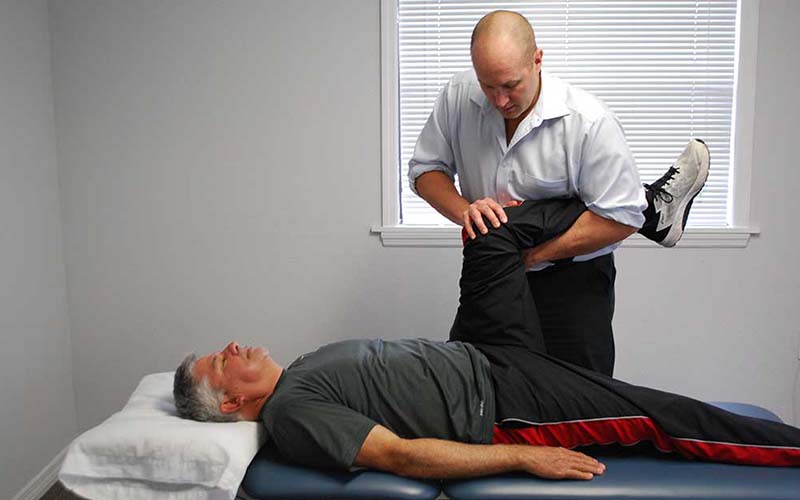
No painful injections, no expensive medications, no surgery
In order to truly solve your pain, we use a holistic approach to Physical Therapy, not relying on injections, medications, or surgery. Instead, we'll strengthen your body's weak points that are causing your pain.
MEET THE TEAM

RON MILLER, DPT, OCS, Cert DN
Doctor of Physical Therapy | Board Certified Orthopaedic Physical Therapy Clinical Specialist | Post-Doctoral Orthopaedic Residency Trained | Certified in Dry Needling | Titleist Performance Institute Certified
Dr. Ron Miller is the owner and founder of Pursuit Physical Therapy. His core belief is that it is not about the physician, the physical therapist, or the insurance company: it is about what is truly best for the patient. Dr. Miller started...
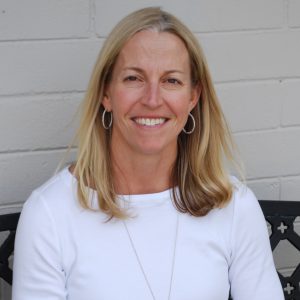
CAREY ROTHSCHILD, DPT, OCS, SCS, CSCS, CKTP
Doctor of Physical Therapy and Assistant Professor at the University of Central Florida | Board Certified Orthopaedic Clinical Specialist
| Board Certified Sport Clinical Specialist
Dr. Carey Rothschild is an Assistant Clinical Professor in the Doctor of Physical Therapy Program at the University of Central Florida. Dr. Rothschild earned a Bachelor of Health Science in Physical Therapy in 1999 from the University of Florida and a Doctor of Physical Therapy from Boston University in 2005...


MICHAEL FABRICK, DPT, Cert. DN
Doctor of Physical Therapy | Certified in Dry Needling | Pursuit Sports Performance Specialist | Professional Tennis Tour Physical Therapist
Dr. Michael Fabrick was born and raised in Hanover, Pennsylvania and attended Slippery Rock University where he received his Bachelor’s degree in Exercise Science. He then went on to receive his Doctorate Degree in Physical Therapy in May of 2020. During his final tenure as a Doctoral intern, he trained underneath Todd Ellenbecker, who is one of the world’s leading experts on shoulder rehabilitation and is the Vice President of Medical Services for the ATP World Tour...
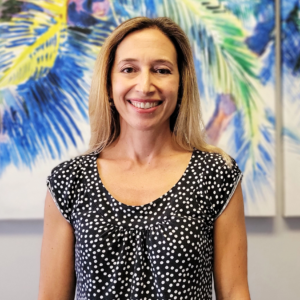
MARYANN DANIELS, PT, MCMT, IDN
Physical Therapist | Dry Needling Certified | Mastery Certified In Manual Therapy | Pelvic Floor And Post Partum Specialist
Maryann was originally born in Connecticut but moved to Florida with her family at the age of 9 and she grew up in Jupiter, Florida. She then went to college at the University of Central Florida...

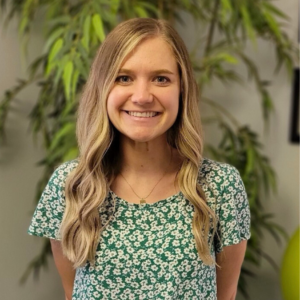
Kayla Cook, DPT, HSP, CSCS
Doctor of Physical Therapy | Hesch Sacroiliac Practitioner | Certified Strength And Conditioning Specialist | Ehlers-Danlos Syndrome Specialist | Volleyball Specialist
Dr. Kayla Cook was born and raised in Northern California and received her undergraduate degree in Kinesiology from California State University in Sacramento. She then received her Doctorate in Physical Therapy from The University of St Augustine for Health Sciences...
BECOMING PAINFREE IS EASIER THAN YOU THINK

Step 1:

Step 2:


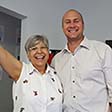 Anne E.
Anne E.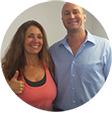 Lisa B.
Lisa B.